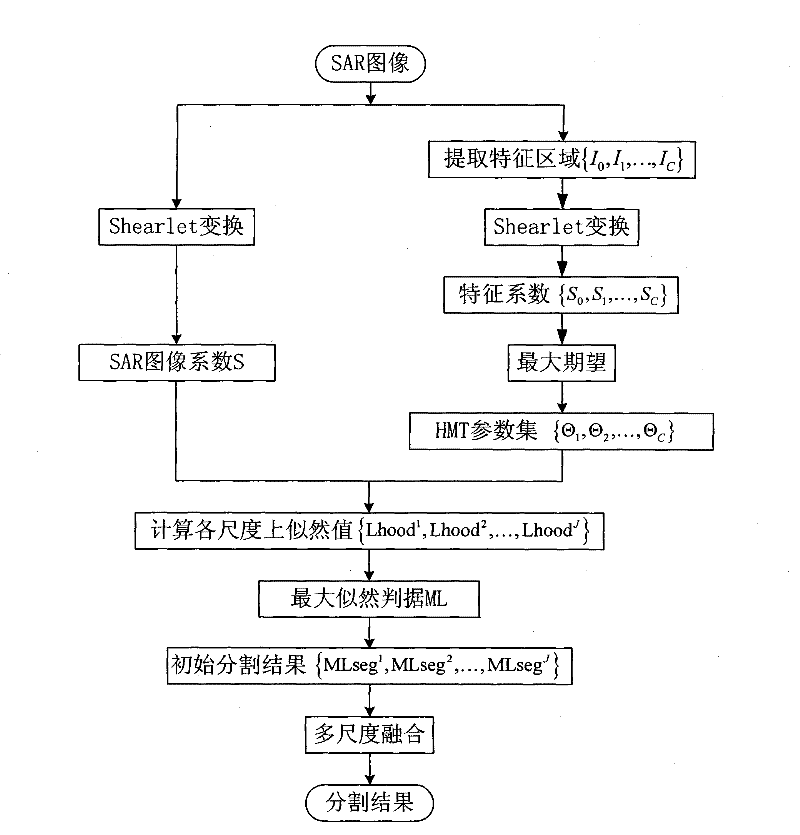Synthetic aperture radar image segmentation method based on shear wave hidden Markov model
An image segmentation and model technology, applied in the field of image processing, to achieve the effect of fewer iterations, effective image segmentation, and fast convergence
- Summary
- Abstract
- Description
- Claims
- Application Information
AI Technical Summary
Problems solved by technology
Method used
Image
Examples
Embodiment Construction
[0028] refer to figure 1 , the specific implementation steps of the present invention are as follows:
[0029] Step 1, extract the feature area of the SAR image to be segmented {I 0 , I 1 ,..., I C}.
[0030] Select pixel areas with obvious texture features in the SAR image to be segmented, and mark these pixel areas as {I 0 , I 1 ,..., I C}.
[0031] Step two, for {I 0 , I 1 ,..., I C} Carry out Shearlet transformation to get the characteristic coefficient {S 0 , S 1 ,...,S C}.
[0032] The Shearlet transform adopts the "9 / 7" tower transform and window function two-dimensional filter method to transform four layers. During the sub-band transform process, by adjusting the size parameter of the direction filter window function in the basis function, any power of 2 is selected. The number of subbands. Calculate feature area {I 0 , I 1 ,..., I C} the Shearlet coefficient {S 0 , S 1 ,...,S C}, which is the training sample.
[0033] Step 3: Use the maximum ex...
PUM
 Login to View More
Login to View More Abstract
Description
Claims
Application Information
 Login to View More
Login to View More - R&D
- Intellectual Property
- Life Sciences
- Materials
- Tech Scout
- Unparalleled Data Quality
- Higher Quality Content
- 60% Fewer Hallucinations
Browse by: Latest US Patents, China's latest patents, Technical Efficacy Thesaurus, Application Domain, Technology Topic, Popular Technical Reports.
© 2025 PatSnap. All rights reserved.Legal|Privacy policy|Modern Slavery Act Transparency Statement|Sitemap|About US| Contact US: help@patsnap.com



